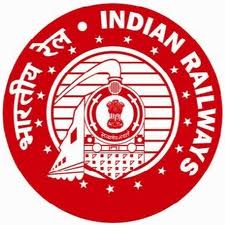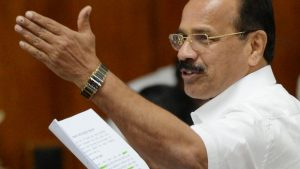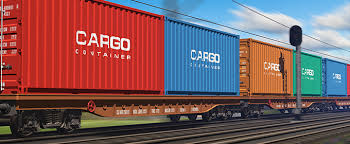The sick Indian Railway needs immediate cure
 I receive a message on WhatsApp “ever heard of a business, which is a monopoly, has a 100 crore customer base, 100% sales (advance payment), capacity utilization 100% but still making a loss…….” The answer to this question is obviously Indian Railways. It is the second most contributing source to Indian economy, after Agriculture. Indian railway is called veins of India, which runs through almost all parts of the country, from East to West and North to South.
I receive a message on WhatsApp “ever heard of a business, which is a monopoly, has a 100 crore customer base, 100% sales (advance payment), capacity utilization 100% but still making a loss…….” The answer to this question is obviously Indian Railways. It is the second most contributing source to Indian economy, after Agriculture. Indian railway is called veins of India, which runs through almost all parts of the country, from East to West and North to South.
Some fact about Indian Railways: being the world’s fourth largest railway network, its operation spans nearly 170 years since 1843. Has an annual revenue base of Rs. 1,06,000 crore ($19 billion). Ranks as largest employer after the US defense department, the Chinese army, Wal-Mart, China National Petroleum, State Grid of China and British health services; it’s the 7th largest employer in the world. It runs as many as 19,000 trains every day. Out of which some 12,000 trains are for passengers and 7,000 for freight. Its network comprises of 7,083 stations. It operates the fourth largest railroad network in the world over 63,974 route-km. It ferries a cargo of over 1 billion tons annually. It transports 2.65 million tons of freight each day.
 The new Railway minister in Narendra Modi regime, D V Sadananda Gowda seems to have captured the dilemma of railways stuck with many unfinished projects that were started mainly to earn political brownie points, numerous technical deficits, oversized employee burden, and some wrong decisions which erstwhile ministers have taken and cannot be overlooked any further. And, to add to his problems, he has to decide if passenger and freight fares will be increased soon as the organization faces a resource crunch. Gowda has to risk the unpopular decisions now as any further delay will only hinder the economy of the nation. A poorly managed railway has proved a drag on the economy.
The new Railway minister in Narendra Modi regime, D V Sadananda Gowda seems to have captured the dilemma of railways stuck with many unfinished projects that were started mainly to earn political brownie points, numerous technical deficits, oversized employee burden, and some wrong decisions which erstwhile ministers have taken and cannot be overlooked any further. And, to add to his problems, he has to decide if passenger and freight fares will be increased soon as the organization faces a resource crunch. Gowda has to risk the unpopular decisions now as any further delay will only hinder the economy of the nation. A poorly managed railway has proved a drag on the economy.
Though Indian Railways carry largest number of passengers and freight, they stand much behind in efficiency, punctuality, cleanliness and services. China’s freight rates are just 58% of India’s and that makes it tough for Indian industry to successfully compete and create jobs at home. Chinese Railways, as we know, is four times more efficient than our railway both in terms of number of passengers carried per employee and freight carried per employee. Most Railways in the world run their trains on time but Indian Railways yet to improve its punctuality whereas they have time schedule for every train.
Some of the glaring facts about the problems faced by the railways are as follows:
The present railway network is overloaded and is inadequate to meet the requirements of the nation. The developing economy of the nation needs quickness and efficiency in the network. Due to rough geographical conditions of the nation, some regions are beyond the reach of railways. These areas need to be opened for removing regional disparity in economic growth. Now this situation needs some serious thinking and tons of money. The Indian railway is overburdened with surplus staff on its regular pay roles. The huge salary and wages bill is eating away railway’s monitory resource which is beyond repair. Is there a remedy to the unwillingness and rigidity of the politician’s motives? In short, the under-productive governance is hampering roads to development. Isn’t this mockery of impotent democracy?
 Indian Railways owes huge outstanding payments to diesel and electric power supply companies. Where would the money come from to settle the huge bills? Despite the age and condition of much of the national train network and roads systems, they continue to defy logical explanation by poorly servicing the rapidly increasing population. The State Electricity Boards and NTPC increase the tariffs randomly and thus adding to the burden of railways. Most of the equipment used by the railways are now obsolete and need immediate replacements. The numbers of tenders you see in the newspapers for purchases are callously treated, and nepotism prevails to an unexplainable extent. The numbers of corruption cases, accusations, charges and court cases everything goes on adding to the snail’s speed in decision-making. There is mounting deficit due to non increase in fares and tariffs by the Government. The UPA government disallowed it due to obvious political reasons.
Indian Railways owes huge outstanding payments to diesel and electric power supply companies. Where would the money come from to settle the huge bills? Despite the age and condition of much of the national train network and roads systems, they continue to defy logical explanation by poorly servicing the rapidly increasing population. The State Electricity Boards and NTPC increase the tariffs randomly and thus adding to the burden of railways. Most of the equipment used by the railways are now obsolete and need immediate replacements. The numbers of tenders you see in the newspapers for purchases are callously treated, and nepotism prevails to an unexplainable extent. The numbers of corruption cases, accusations, charges and court cases everything goes on adding to the snail’s speed in decision-making. There is mounting deficit due to non increase in fares and tariffs by the Government. The UPA government disallowed it due to obvious political reasons.
Another fact is that railway’s bulk carriage is facing stiff competition from road transport and thus its share in passenger and goods traffic is declining.
 Rapid increase in train accidents raises serious doubts in the public mind about safety of Rail travel and the general health of the railway network. There are several factors which are responsible for increasing number of railway accidents; some reasons are the over-aged tracks, wagons, coaches, bridges and signaling system. According to the Khanna Railways Safety Review Committee Report which was set up in 1998 under Chairmanship of Justice H.R.Khanna, states that nearly 25 per cent of the total railway tracks in India are over-aged and are due for replacement. The tracks suffer from fatigue and wear and tear in due course of time. Their replacement should be carried on side by side. In several derailments poor condition of tracks had been found responsible.
Rapid increase in train accidents raises serious doubts in the public mind about safety of Rail travel and the general health of the railway network. There are several factors which are responsible for increasing number of railway accidents; some reasons are the over-aged tracks, wagons, coaches, bridges and signaling system. According to the Khanna Railways Safety Review Committee Report which was set up in 1998 under Chairmanship of Justice H.R.Khanna, states that nearly 25 per cent of the total railway tracks in India are over-aged and are due for replacement. The tracks suffer from fatigue and wear and tear in due course of time. Their replacement should be carried on side by side. In several derailments poor condition of tracks had been found responsible.
Indian Railways has 34,000 over-aged wagons, 1,322 over-aged coaches, and 1,560 stations with over-aged signaling. Moreover, 262 bridges are listed “disastrous”. The white paper released by the Railway in April, 2003 acknowledges that over 51,000 bridges are of 19th century vintage bridges, which may collapse any time and 56,178 are more than 80 years old. 44.17 per cent of the bridges have outlived their life. According to the review conducted by the Comptroller General of India on various aspects of bridge management between 1997-98 to 2011-02 these old bridges include 339 important, 4,210 major and 51,629 minor bridges built before 1920.
The Khanna Committee had further reported that 76 per cent of all rail accidents are due to derailments, 7 per cent due to collisions, 16 per cent take place at level crossings and 1 per cent is due to fires. Resource crunch is said to be the main cause of all these happenings in the Indian Railways.
If we want to see some positive changes in the scene, we have to accept the hike in fares and freight charges that are implemented after a long time; says Chandrajit Banerjee, Director General of the Confederation of Indian Industry (CII). This will help in resource mobilization. The Confederation of Indian Industries (CII) hopes that the higher fares will lead to better quality and safety of services offered by the Indian Railways. Meanwhile, CII says resources can also be mobilized from inviting multilateral funding agencies to participate in railway projects, better utilization of railway land and creation of a Rail Asset Leasing Authority. However, we all should understand that the freight fare hike as “inevitable.” Railway officials say that the fare hike decision still falls short of the Railways’ requirement. To effectively target under-recoveries, fares should have been raised by almost 50 per cent.
 The CII has urged the Government to accord top priority to foreign direct investment (FDI) in Railways. This decision might be taken within next few days. The FDI will enhance safety, security, increasing average speed, punctuality, quality and efficiency. The FDI will allow the Diamond Quadrilateral Project in high speed trains and networking freight corridors. The FDI will also boost supporting industries such as original equipment manufacturers, drills, crushers, screens, earthmovers, and other materials.
The CII has urged the Government to accord top priority to foreign direct investment (FDI) in Railways. This decision might be taken within next few days. The FDI will enhance safety, security, increasing average speed, punctuality, quality and efficiency. The FDI will allow the Diamond Quadrilateral Project in high speed trains and networking freight corridors. The FDI will also boost supporting industries such as original equipment manufacturers, drills, crushers, screens, earthmovers, and other materials.
It will also help the long awaited project of 235 km railway line to tap Chhattisgarh’s iron ore reserves which is the 2nd largest in the world. This project was proposed by SAIL along with NMDC in 1983. Further it will enable clearance for the 2nd stage railway line between Dallirajhara and Jagdalpur in Bastar District. Imagine what kind of immense facelift it will give to the undernourished, backward Bastar. There is also a proposal to allow foreign investment in sub-urban corridors and freight lines connecting ports, mines and power installations. However, existing passenger and freight network operations will not be opened to foreign investors, a decision has been taken.
 People of India don’t want few changes here and there, but a comprehensive change which would take the Railways of this country to match the best in the world. The focus of the Narendra Modi-led government calls for capable governance and building up a strong nation through fast-track development in the areas of agriculture, infrastructure creation, employment generation and economic up-lifting of our people. I know saying all this is easy for us but doing it and implementing some harsh measures is difficult, such as the railway fare hike from this Friday. Some tough decisions may not go down well with some sections of society.
People of India don’t want few changes here and there, but a comprehensive change which would take the Railways of this country to match the best in the world. The focus of the Narendra Modi-led government calls for capable governance and building up a strong nation through fast-track development in the areas of agriculture, infrastructure creation, employment generation and economic up-lifting of our people. I know saying all this is easy for us but doing it and implementing some harsh measures is difficult, such as the railway fare hike from this Friday. Some tough decisions may not go down well with some sections of society.
We don’t need committees after committees to report inadequacies in the system, we need actions in solutions. We’ve had enough dilemmas – rounds of discussions, arguments, pros and cons on decisions, policy paralysis, pulling legs of each other between the ruling government and the opposition. Enough is enough; we need drastic improvements in the state-run, monopoly railway system. It runs through veins of the nation and indeed is the lifeline for all sorts of support system.
dilemmas – rounds of discussions, arguments, pros and cons on decisions, policy paralysis, pulling legs of each other between the ruling government and the opposition. Enough is enough; we need drastic improvements in the state-run, monopoly railway system. It runs through veins of the nation and indeed is the lifeline for all sorts of support system.












































